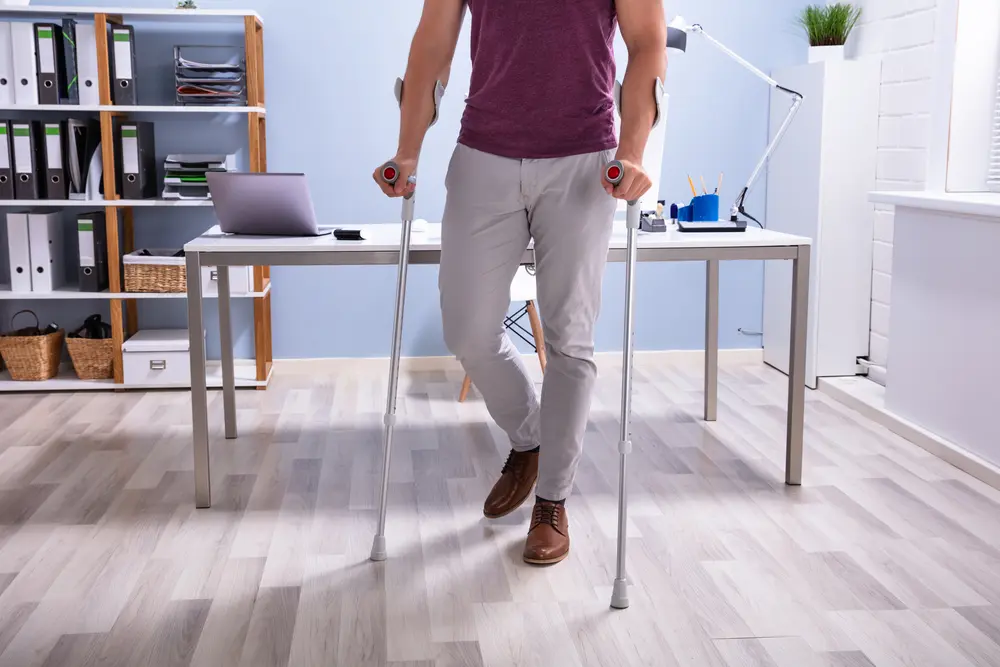When life throws unexpected curveballs, and you find yourself unable to work due to a disability, knowing your rights and benefits is important.
n California, the State Disability Insurance (SDI) program provides short-term financial assistance to eligible individuals. But how much does disability pay in California? What factors determine this amount?
Let’s delve into the details to answer these and more queries about this vital safety net.
Understanding State Disability Insurance in California
California State Disability Insurance, or SDI, is a partial wage-replacement insurance plan for California workers. It is administered by California’s Employment Development Department (EDD).
This program ensures you have some form of income if a non-work-related illness or injury, pregnancy or childbirth, prevents you from performing your regular or customary work.
This coverage comes from SDI deductions that are automatically deducted from most paychecks in the state. So, if you’ve received wages where SDI taxes were withheld, you are probably covered.
In addition to disability insurance benefits, the SDI program provides Paid Family Leave (PFL) benefits paid family off, allowing eligible individuals to take time off to care for a seriously ill family member or bond with a new child.
It’s worth noting that SDI benefits differ from workers’ compensation payments or unemployment benefits. While workers’ compensation pays for disabilities related to the job, SDI covers disabilities outside the job.
And unlike unemployment benefits, which provide income replacement if you lose your job, SDI benefits cover situations where you cannot work due to a disability.

How Disability Benefits are Calculated
Calculating your SDI benefits, specifically, your weekly benefit amount, hinges on your earnings in a particular period known as the “base period.”
The base period is a 12-month average wage period divided into four quarters. It typically includes the 12 months immediately before the claim for disability benefits.
For SDI, your base period is the last complete calendar quarter before your disability benefit period begins.
So, if your disability begins in April, May, or June, your base period is the 12 months from January to December of the previous year.
In this base period, the EDD looks at your highest-paid quarter and calculates your weekly benefit based on the average weekly wages that you earned during that quarter.
Your average weekly wages during the highest-paid quarter form the basis of your disability benefits.
Remember that your regular and the wages paid any part-time wages you earned during this base period are considered.
So, having multiple jobs or varied incomes during this period might affect your benefit amount.
The Weekly Benefit Amount and the Maximum Weekly Benefit Amount
Once weekly wages for your base period and the highest paid quarter are determined, the Employment Development Department (EDD) calculates your weekly benefit amount.
The weekly benefit amount is approximately 60-70% of the wages you earned 5 to 18 months before your claim start date.
In addition, the law limits the amount that can be paid weekly. This cap is known as the maximum weekly benefit amount. For 2023, the maximum weekly benefit is $1,357.

Factors Affecting Your Disability Benefit Payments
While the primary determinant of your disability benefit is your earnings during the base period, other factors may impact your benefit payment.
For instance, your citizenship and immigration status can affect your eligibility for disability benefits.
In California, you can be eligible for SDI benefits if you are a U.S. citizen, a permanent resident, or a worker with a valid work permit.
Also, the date your disability began can impact your benefits. You will not receive your first benefit payment until at least eight days after your disability begins.
Application and Claim Process for Disability Benefits
Submitting a claim for disability insurance benefits in California involves completing and submitting an SDI claim form. It can be done online or by mail.
The claim form includes a medical certification portion. A licensed physician or an accredited religious practitioner must complete this section, certifying that you are physically unable to perform your regular or customary work.
Do note that the EDD may require additional medical information or schedule an independent medical examination to verify your condition.
How Long Do Disability Benefits Last?
SDI benefits are generally short-term, with the benefit period typically ranging from a few weeks to a year.
The exact duration of your benefits depends on the other short–term disability benefits and the time your physician or accredited religious practitioner certifies you cannot perform your regular or customary work.
Do note that while the SDI benefits are short-term, it doesn’t mean you’re out of options after they end. You might be eligible for other benefits, like unemployment benefits, if you are still unable to work but are looking for work.
Navigating Complex Situations: A Few Scenarios
Sometimes, your circumstances might make your disability claim a bit more complicated. Here are a few examples of such scenarios and how they might affect eligibility for your disability benefits.
Elective Surgery and Normal Pregnancy
For elective surgery and normal pregnancy, disability benefits are typically limited to a certain period, even if your medical provider has certified a longer disability.
Labor Disputes
If you become disabled while unemployed due to a labor dispute, your claim cash benefits could be affected. The EDD will investigate the matter, and your benefits may be denied or delayed.
Disability Lawyer Assistance
In some cases, you might need assistance with your disability claim. A disability lawyer can help you understand your rights, guide you through the claim process, and represent you in any appeals if necessary.
Every situation is unique, and the above scenarios are just examples. Consult your medical provider or legal professional for the most accurate information.
Conclusion
Navigating the intricacies of California’s State Disability Insurance can seem daunting, but understanding these fundamentals can make the process a bit less stressful.
Remember, your benefits are primarily determined by your earnings during the base period, with factors such as your medical condition, citizenship, and immigration status also playing roles.
It’s essential to be aware of the claim process, your weekly benefit amount, the maximum weekly benefit amount, and the duration of benefits.
Also, remember that unique circumstances like elective surgeries and labor disputes or disputes can impact your benefits.
Awareness of these nuances will help you make informed decisions and maximize your entitled benefits.
Frequently Asked Questions
1. How much is disability a month in California?
A person’s weekly benefits monthly amount from disability insurance in California depends on their past earnings. On average, the weekly benefit amount is about 60-70% of the wages earned 5 to 18 months before the disability claim starts, up to a maximum weekly benefit amount.
2. How much is the average disability check in California?
The amount of a disability check varies for each individual, but it’s typically about 60-70% of a person’s previous earnings. As of 2023, the maximum weekly benefit is $1,357.
3. What is the max for disability in California?
The maximum weekly benefit for disability in California for 2023 is $1,357.
4. What is the minimum disability in California?
The minimum weekly benefit amount for disability insurance in California is $50.
5. How long does it take to receive disability payments in California?
The first benefit payment will arrive at least eight days after your disability begins.
6. Are disability benefits in California taxable?
Disability benefits are not typically considered taxable income in California
7. Can I work while receiving disability benefits in California?
While on disability, you may be able to perform some work and still receive benefits. However, any earnings will be subtracted from your weekly benefit amount.
8. How do I apply for disability benefits in California?
You can apply online or by mail. The claim form includes a medical certification portion that must be completed by a licensed physician or accredited religious practitioner.
9. Can I receive disability benefits if I am pregnant?
Yes, pregnancy can qualify for disability benefits in California. The typical claim period is 4 weeks before the expected due date and 6 weeks after delivery.
10. How can a disability lawyer assist me?
A disability lawyer can help guide you through the claim process, understand your rights, and represent you in any appeals if necessary.

